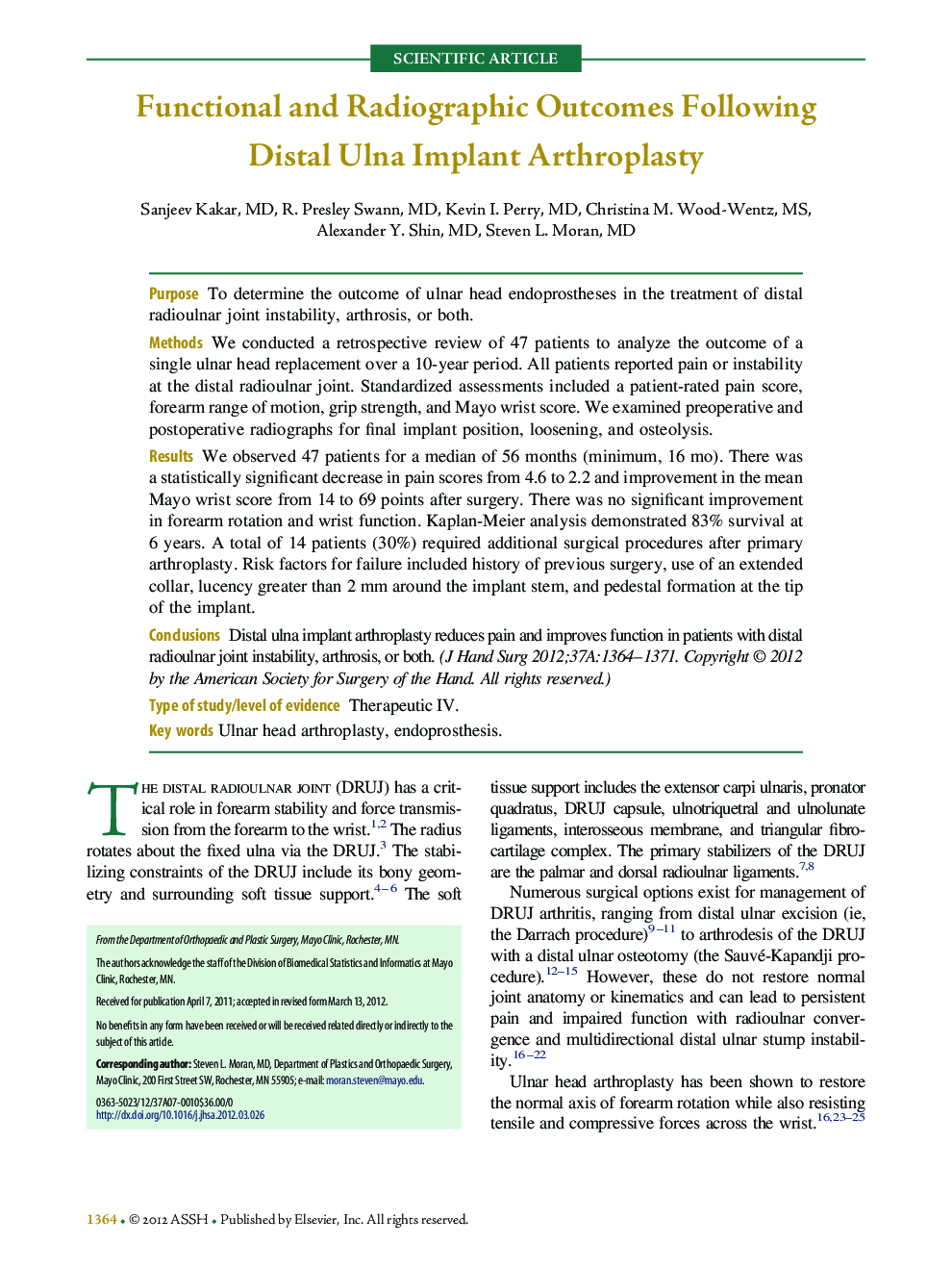| Article ID | Journal | Published Year | Pages | File Type |
|---|---|---|---|---|
| 4068399 | The Journal of Hand Surgery | 2012 | 8 Pages |
PurposeTo determine the outcome of ulnar head endoprostheses in the treatment of distal radioulnar joint instability, arthrosis, or both.MethodsWe conducted a retrospective review of 47 patients to analyze the outcome of a single ulnar head replacement over a 10-year period. All patients reported pain or instability at the distal radioulnar joint. Standardized assessments included a patient-rated pain score, forearm range of motion, grip strength, and Mayo wrist score. We examined preoperative and postoperative radiographs for final implant position, loosening, and osteolysis.ResultsWe observed 47 patients for a median of 56 months (minimum, 16 mo). There was a statistically significant decrease in pain scores from 4.6 to 2.2 and improvement in the mean Mayo wrist score from 14 to 69 points after surgery. There was no significant improvement in forearm rotation and wrist function. Kaplan-Meier analysis demonstrated 83% survival at 6 years. A total of 14 patients (30%) required additional surgical procedures after primary arthroplasty. Risk factors for failure included history of previous surgery, use of an extended collar, lucency greater than 2 mm around the implant stem, and pedestal formation at the tip of the implant.ConclusionsDistal ulna implant arthroplasty reduces pain and improves function in patients with distal radioulnar joint instability, arthrosis, or both.Type of study/level of evidenceTherapeutic IV.
